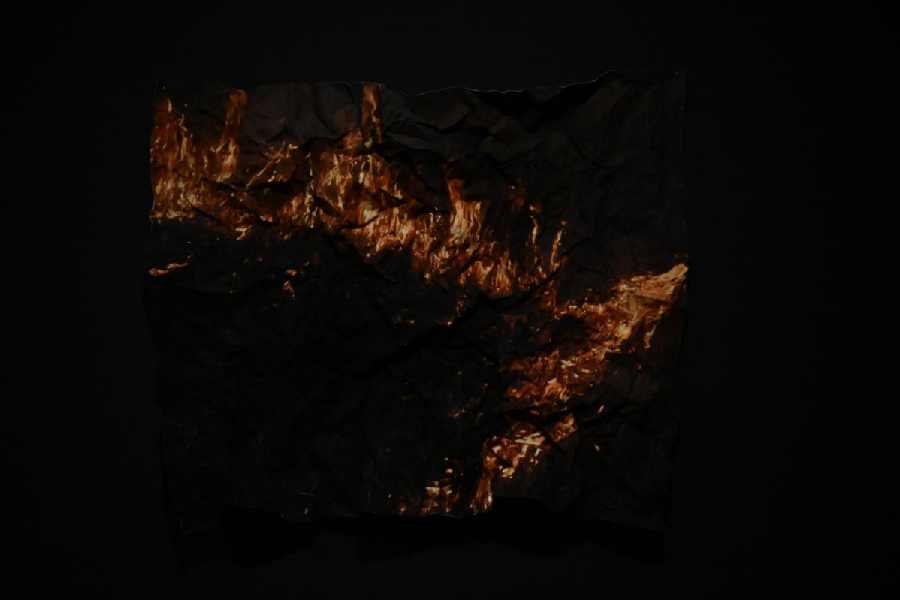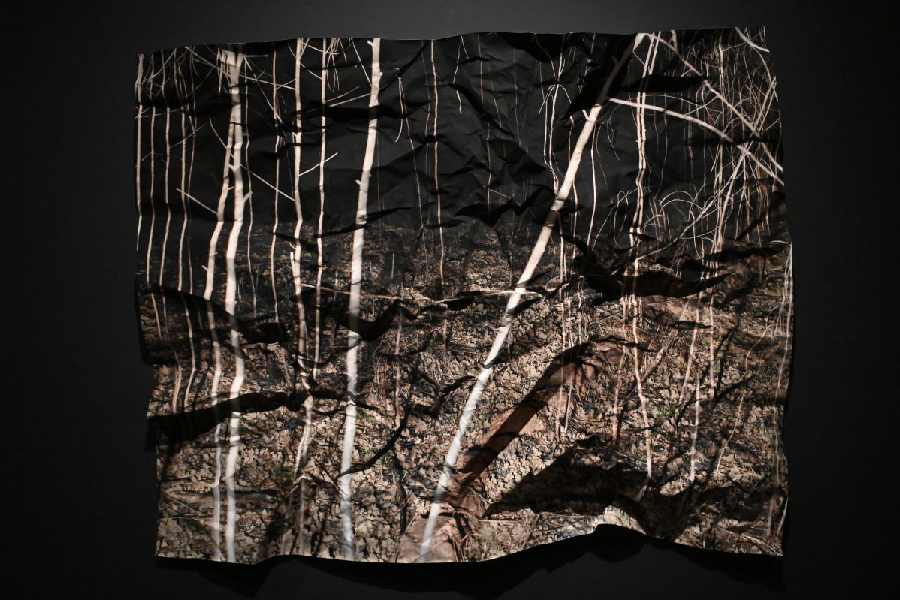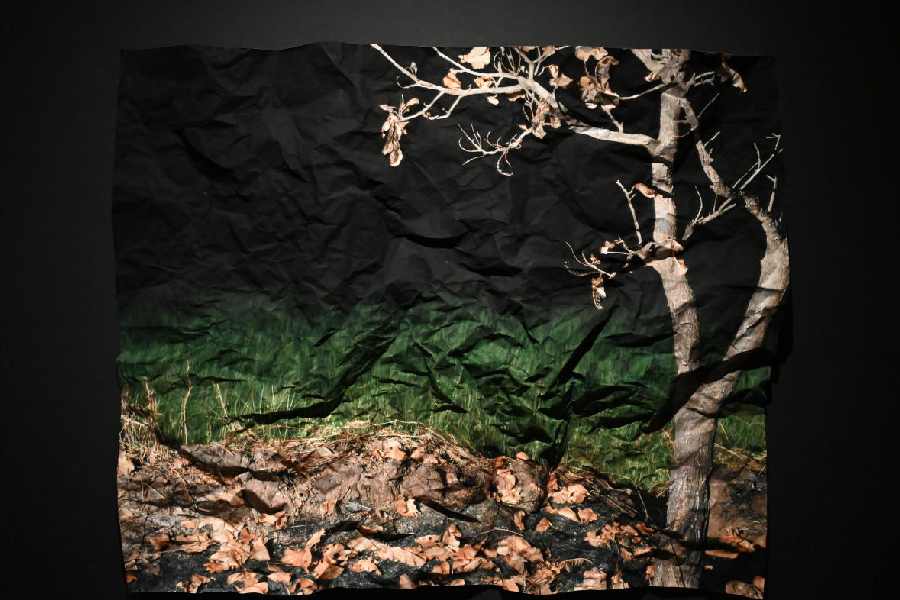Art is a solitary process but its presentation, often, is a collective one. Tenzing Dakpa’s Weather Report is powerful in its singular form but comes alive and speaks to the viewers in a multi-dimensional tone in the ecosystem of Experimenter Hindustan Road.
The dark walls added more intensity to the Sikkim-born and Goa-based Dakpa’s collection of photographs themed on climate change and particularly deforestation in the face of urbanisation.
The fire engulfing and preying on live trees and vegetation in the dead of night, caught spectacularly on still camera with the help of portable profoto light, came alive with the live music curated and played by Dakpa during the opening evening on May 24. If you were in the gallery on the day, your olfactory senses also must have picked up a smoky scent, that for a moment transported you to the scene witnessed by Dakpa’s naked eyes and lens. It is not just the visual, the music and the presentation that makes Dakpa’s photographs on archival pigment print stand out.
The arrangement and texture, lent by the Rhode Island School of Design’s alumnus, plays a major role in taking the photography exhibition out of its traditional and monotonous confines.
Case in point are the three photography installations in the Weather Report series — Mornings at Naikavaddo, a grid of 135 prints, and Evening at Muddovaddo and Monsoon at Muddovaddo, both grids of 36 prints. The Manifest series in 16x20 and 40x50 inches strips the usual flat composure and generates more interest with its uneven surface.

Tenzing Dakpa's artwork
A Q&A with the artist
Tell us about the idea behind the exhibition.
I have been photographing in Goa since 2017, and I let the pictures guide me. This project is a result of an observation born out of an interest in paying attention to my immediate environment and how I can describe it using a camera and my preoccupation with photography. A smaller selection of both Weather Report and Manifest were exhibited in Goa as part of an open studio and the Serendipity Arts Festival in December 2023.
The title of the exhibition Weather Report connotes a description of what a place feels like at any given day. Born out of an interest in paying attention to my immediate environment and how I can describe it using a camera and my preoccupation with photography, the exhibition is a visceral imprint of human impact on the ecological world intertwined with my practice as a photographer and an artist.

Tenzing Dakpa's artwork
Music adds a new dimension to the solo project. Tell us about creating the mix.
The idea for a performance came from my wide interest in music. It took a little bit of prodding by Priyanka Raja to start working on a playlist. However, the initial idea was to use just the field recordings from my time while photographing Manifest. The sounds in these recordings are made using directional and contact mics and range from distant sounds of bar, birds, insects, water bodies, crackling of fire, wind and so on. These sounds introduced an element of life and habitation, which are present but not implied in the images.
Layered with these sounds, the music ranges from anthropological recordings of harvest songs from Nagaland to composers like Mica Levi, Alvanoto and Ryuchi Sakamoto. The intent was to briefly transport the audience to a feeling of experiencing this work, whatever that might be.

Tenzing Dakpa's artwork
For how long you have been working on Manifest?
I started photographing Manifest late 2022 and continued till earlier this year. Weather Report comes from an archive of images made since I moved to Goa in 2017.

Tenzing Dakpa's artwork
Tell us about the process and idea behind arranging the picture like a collage and also the method of creating uneven texture on the photographs.
I make most of my prints in my studio, ranging from archival pigment prints to photobook maquettes. It involves sourcing, profiling and handling all kinds of paper. Working with printing and paper, I landed upon both of these processes. The Weather Report installation came from a limitation of printing large images in my studio, so I would end up printing in grids to see what the image would look like life-size. Seeing the image reveal itself and the sheets reacting to natural airflow and the environment added a layer to the reading of the work. The crumpling of the print similarly evoked the impressions of the terrains of these forests, which added a relic-like quality, topographic and abstract.
